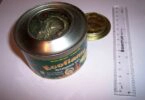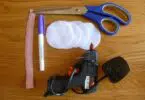Water is essential for survival, especially if you’re far away from civilization. Studies have shown that the body can only survive for about three days without water, and finding fresh sources on your own can be troublesome. Sure, those rivers and lakes may look potable, but they’re riddled with bacteria and viruses that can make you extremely sick. It’s strange how the Earth is made up of 70% water, but only 1% of it is drinkable. There are ways around that that can make it safer so that you don’t end up making yourself sick.
[the_ad_placement id=”in-text-1-type-r”]See also: Water Survival: How to Collect Water and Make Salt Water Safe to Drink
But what can you do when you’re stranded near the ocean? That big body of water looks tempting, but it’s filled with so much salt that you’ll only end up more dehydrated than before. Never fear, there are ways that teach you how to purify salt water so that you can stay hydrated, no matter what situation you find yourself in.
The process
The process of learning how to make ocean water drinkable is called desalination. This is the removal of salt from the water so that it can be safe to drink. There are many methods that can be used to do this, and some of them involve very expensive equipment, especially those owned by big companies on order to generate lots of water for consumption.

But if you’re on your own, you won’t have access to these tools, so knowing how to purify salt water when you’re in a pinch can save your life. The most common way of doing this is through evaporation. This is the process where the water is heated up and becomes steam. It’s through this that the salt is removed and pure water is created. It does require the use of heat, but there are several sources that you can use.
Desalination Method One: using a pot lid
This method is best used if you need water for a few people or if you’re on the run. You won’t gain a lot of water from the process, but it’s definitely good to use in the case of an emergency.

What you’ll need are a metal cup that’s heavy enough to sink, a pot with a domed lid, and a source of heat.
- First, place the cup in the pot and then add some salt water. Make sure that it’s at a level where the cup isn’t going to get filled when the water starts boiling.
- Take your domed lid and turn it upside down so that the cup is at the center of the dome. Make sure that it’s well sealed around the edges so that you don’t lose any water.
- Place the pot on your source of heat and watch as the water boils. The increased temperature will turn the water into steam, which hits the cool surface of the pot lid. This small decrease in temperature is enough to turn the steam into water again. The water will run down the lid and into the cup.
- If you don’t have a pot lid, you can always use some saran wrap with a weight placed in the middle to create the same domed effect.
What’s great about this method is that salt doesn’t evaporate, so it gets left behind in the boiling process. The water may not taste as pure as you expect, but it will definitely be a lot less salty than regular ocean water and will keep you hydrated.
Above is a helpful video on how to use this method.
Desalination method two: using tubing
This method will help you to create a bit more water, and uses the same theory that is used in an alcohol still.

What you’ll need are a metal bottle or heat-resistant glass bottle, a cork or rubber seal that fits in the mouth of the bottle, a few feet of tubing, and a catch-basin.
- First, you need to make a hole in the rubber or cork that you’ll be using. The hole needs to be large enough for the tubing to fit into.
- Fill the bottle with water, allowing for some space at the top. Filling it all the way will only force the salty water out of the tube and into your catch-basin.
- Place the tube through the hole in the cork or rubber so that it is even with the bottom of the cork and then place in the mouth of the bottle. Make sure it’s in well enough.
- Place the catch-basin at a lower level than the bottle and place the tubing in it. You need the water to run down the tube and into the container instead of back into the bottle.
- Place the bottle over your heat source, taking care not to get the tubing hot. It will burn or melt, and make it more difficult for you to collect any water.
- Bring the water to a boil. The steam should enter the tubing and start to cool so that it is turned back into water when it gets into your catch-basin.
You’re only limited by the size of your catch-basin with how much water you collect using this method.
Desalination method three: using foil
This method combines the first two together, and should be used if you don’t have access to anything other than the pan you brought to cook with.
[the_ad_placement id=”in-text-2-type-r”]What you’ll need are a pot, some aluminum foil, tubing, a catch-basin, and a source of heat.
- Fill your pot halfway with the salt water.
- Create a cone out of the aluminum foil that’s big enough at the mouth to cover the pot and small enough at the other end of the tubing to fit through.
- Place the pot on your source of heat, place the cone on top and then put the end of the tubing into your catch basin. Bring to a boil.
- As the steam is created, the foil will funnel it towards the tubing, where it becomes cool and drips into your catch-basin.
Be wary of touching the foil, as it can get very hot.
Desalination method four: using the Sun
What happens if you’re without firewood or some means of starting a fire? Why not harness the power of the sun? The sun itself is capable of evaporating tremendous amounts of water on a daily basis, and you can turn that power to your advantage, but the process will take longer than usual.

This method is best to use during your travel so that you always have some water on hand in case of emergencies. What you’ll need is a bowl, a drinking glass or container, a rock or small weight, and some cling wrap.
- Place the container you plan to drink out of in the middle of the bowl. It needs to be shorter than the bowl itself but taller than the level of water.
- Fill the bowl with salt water.
- Cover the bowl with cling wrap and place a weight or rock in the middle of it.
- Leave it out in the sun for evaporation to take place.
It may take a few hours or even all day to get enough water to drink, but it’s better than being stranded without any way to hydrate yourself.
The method can be done over and over as needed and requires very little preparation.
Desalination method five: using your life raft material
If you’re suddenly stranded at sea without any of the above equipment, that doesn’t mean you’re up a creek without a paddle. The tools that you have with you can help you to make ocean water drinkable. This method was developed by a soldier in WWII who had been stranded in the Pacific Ocean.
- First you’ll need to find the gas bottle from your life raft. This is the cylinder that is used to fill the raft with air. It’s important that it be empty first before you try the next step.
- Once you’ve gotten it open, fill it up with salt water. Don’t fill it up all the way, as you don’t want it to spill over.
- Take the container to where you’ve built a fire, as well as the hose and leak stoppers that your raft came with.
- Attach the hose to one end of the leak stopper, ensuring that a good seal has been created between them. You don’t want any of the water vapor to go to waste.
- Use the opposite end of the leak stopper to plug up the hole of the gas bottle. Make sure a seal has been created around these two as well.
- Bury parts of the hose to stop it from flopping around as water travels through it, keeping the end of the hose exposed so that water can collect into a container. Make sure the hose is straight and free of any kinks.
- Place the gas bottle directly into the flames of your fire. This will definitely heat up very quickly, given the metal of the container. Watch as the water collects into the pan and make sure that it’s cool before drinking.
It’s the same method as described above with the tubing, but made out of different parts for when you’re not that prepared to be stranded in the middle of nowhere.
Above is a handy video detailing the above steps.
Desalination method six: digging a trench
For when you don’t have a multitude of containers to collect the water, you’ll have to look for other ways of collecting water. Say that you’ve been out sailing, and you’re suddenly swept to an abandoned island by a large wave. Your boat has been smashed and you have nothing else on your person but a survival knife and your clothes.
[the_ad_placement id=”in-text-3-type-r”]All of these can be put to good use in helping you get fresh drinking water. What you’ll need to gather together are your sail, a waterproof windbreaker or other waterproof material, and your knife.
- First, survey the surrounding area to see if there are any sand dunes around. Even the smallest ones will do. You want one that’s close to where the wet sand is, as this is how you’ll be collecting the water. If you’d like, you can trim the sail into several smaller pieces so that you can have several sources of fresh drinking water.
- Place the sail on the ground and make sure it’s flat. Then trace the size of the sail in the sand.
- Dig a trench in the shape of the sail that’s approximately two feet inside the traced shape. Place the dug sand within the two-foot border, as well as in a small pile in the middle of the shape.
- Keep digging until there is about two feet of water in the hole.
- Create a deep divot in the mound at the center of the shape to create a bowl, and lay your windbreaker or waterproof material in the middle.
- Place the sail over the trench and the bowl and weigh down the edges with any rocks or heavy objects that you can find around the beach.
- Place a heavy stone in the center of the sail, directly above the bowl. The power of the sun will start to evaporate the water underneath, and as it clings to the fabric of the sail, it will condense and be funneled into the makeshift bowl you’ve created.
And even if it does decide to rain, the fresh water will only add to your supply of drinking water, so you won’t have to worry about covering these stills up or keeping them dry.

Image credit: wt.kimiq.com
Knowing how to purify salt water before you end up in a crisis situation can help you survive much longer than you would without, and provides you with the skills of being more self-reliant. It’s important that if you do find yourself in an emergency where you’re without your usual tools, you should remain calm at all times.
Panicking can make it difficult for you to think straight, and the added stress can put an unnecessary toll on your body that minimizes your chances of survival. Being prepared for any situation doesn’t require you to lug around 500 pounds of equipment; it just requires a little ingenuity and creativity in manipulating what you have to your advantage. See also our other tips on how to purify water for more information.






Intriguing subject. What is the max amount of fresh water you can gain daily by using this method?
The amount of fresh water you collect depends on the desalination method you use and the speed of the process.
I live next to salt water and often thought deeply on the question of purifying salt water.
Is it possible to entirely supply a household with salt water if you use one of the methods you mention?
It’s possible to supply your house with purified salt water, but you will have to do the process at large scale.